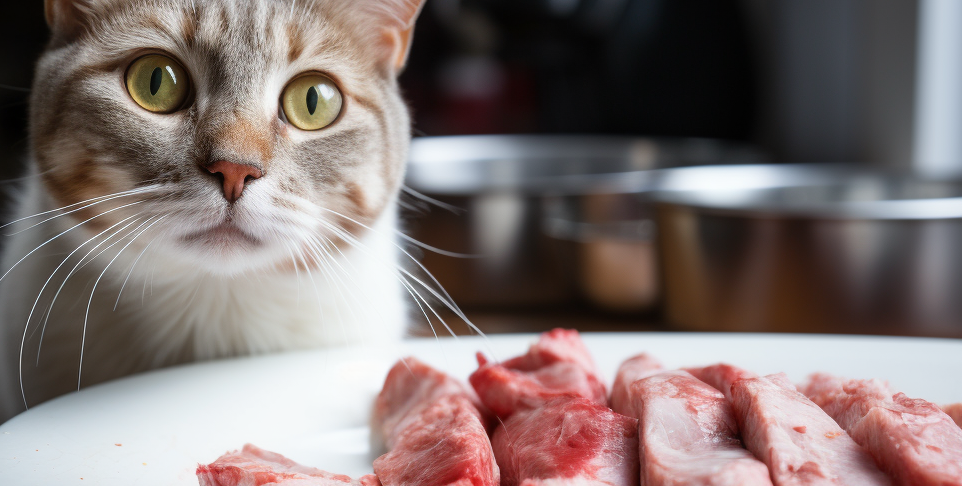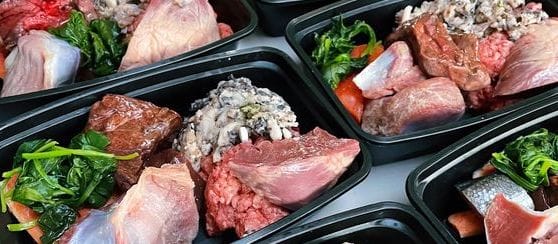The Benefits of a Raw Food Diet for Cats

In recent years, the trend towards natural and holistic lifestyles has transcended human diets, making its way into the world of pet nutrition. One such approach gaining remarkable traction among cat owners is the raw food diet. This diet, rooted in the philosophy of feeding pets foods similar to what their wild ancestors consumed, promises a range of health benefits. While traditional cat foods often rely on processed ingredients, a raw food diet emphasizes uncooked meats, bones, and organs, aiming to replicate a more 'natural' feline diet. This approach has sparked considerable interest and debate within the pet care community, prompting cat owners and veterinarians alike to explore its potential advantages. As we delve deeper into this topic, it's essential to understand what a raw food diet entails for cats and how it aligns with their nutritional needs, keeping in mind the importance of informed and balanced choices for our feline companions.
What is a Raw Food Diet?
At its core, a raw food diet for cats consists of feeding them unprocessed, fresh meat, bones, and organs, closely mimicking what they might eat in the wild. This dietary approach is grounded in the belief that consuming foods in their natural, uncooked state offers optimal nutritional benefits for felines. Common ingredients in a cat's raw diet include muscle meat, often still on the bone; organ meats like liver and kidneys, which are rich in nutrients; raw bones, either whole or ground, for calcium and other minerals; and sometimes, small amounts of fresh vegetables and fruits for added fiber and vitamins. Additionally, some raw diets may incorporate supplements to ensure a well-rounded nutritional profile. This diet aims to provide cats with a balance of protein, fat, and essential nutrients, promoting better health and mirroring the diet of their wild ancestors. Such natural feeding strategies are gaining popularity among pet owners seeking a more holistic approach to their cats' health and wellbeing.
Historical Diet of Cats
Understanding the historical diet of cats offers insight into the modern raw food trend. Wild and ancestral cats are obligate carnivores, thriving primarily on prey such as rodents and birds. This natural diet is rich in protein, fats, and includes minimal carbohydrates. It's a diet shaped by evolution, perfectly tailored to their digestive system and nutritional needs. Today's raw food diets for domestic cats aim to replicate this ancestral eating pattern. By focusing on fresh, uncooked meats and bones, raw diets seek to mimic the nutritional profile wild cats have evolved to consume, providing a more species-appropriate and natural diet for our feline friends.

Benefits of a Raw Food Diet
Nutritional Advantages
The raw food diet for cats aligns closely with their innate nutritional needs. Cats are natural carnivores, and a diet comprising primarily raw meat provides a wealth of essential nutrients. This includes high-quality protein, vital for muscle maintenance and overall health, as well as taurine, an amino acid crucial for heart and eye health, abundantly found in raw meat. Unlike some commercially processed foods, a raw diet minimizes carbohydrate intake, aligning with a cat’s limited ability to digest them. Moreover, raw diets can be rich in natural enzymes and phytonutrients, which are often lost in the cooking process. These components play a key role in optimizing a cat's metabolic and physiological functions.
Dental Health
A significant benefit of a raw food diet is its impact on dental health. Chewing on raw, meaty bones can help reduce plaque and tartar buildup on a cat's teeth. This natural form of dental care is absent in most commercial cat foods, especially soft or canned varieties. The mechanical action of gnawing on bones and tough meat textures helps in maintaining healthier gums and cleaner teeth, potentially reducing the risk of dental diseases, which are common in domestic cats.
Improved Digestion
Cats have a digestive system that's well-suited for breaking down raw meat. A raw diet can be easier for cats to digest, leading to improved gut health. This diet is often free from artificial additives and fillers found in many commercial cat foods, reducing the risk of digestive upset. Additionally, raw foods contain naturally occurring moisture, which is essential for maintaining adequate hydration and smooth digestive processes in cats. Pet owners often report smaller, less odorous stools in cats on a raw diet, indicating a more efficient digestive system.

Potential Risks and Considerations :
While the raw food diet for cats has its advocates, it's crucial to acknowledge the potential risks and necessary precautions. A primary concern is bacterial contamination. Raw meat can harbor pathogens like Salmonella and E. coli, posing health risks not only to cats but also to human household members, especially those with weakened immune systems. Safe handling, storage, and sourcing of raw ingredients are imperative to minimize these risks.
Another significant consideration is the balance of the diet. Cats require a precise blend of proteins, fats, vitamins, and minerals for optimal health. An unbalanced raw diet can lead to nutritional deficiencies or excesses, potentially causing long-term health issues. This is particularly true regarding the balance of calcium and phosphorus, essential for bone health. Ensuring a properly balanced diet often requires adding supplements and varying the types of meat and organs fed to the cat.
Consulting with a veterinarian or a pet nutritionist is vital before transitioning to a raw diet. They can provide guidance on proper formulation and supplementation to ensure the diet meets all the nutritional needs of your cat. It's also important to monitor your cat's health closely when switching to a raw diet, adjusting as necessary to maintain their overall well-being.

Transitioning to a Raw Food Diet
Transitioning your cat to a raw food diet requires a gradual and thoughtful approach. Start by mixing a small amount of raw food with their current diet, slowly increasing the raw portion over several weeks. This gradual introduction helps the cat's digestive system adjust and can reduce the likelihood of gastrointestinal upset. Pay close attention to your cat's reaction to the new diet, including their appetite, stool quality, and overall behavior.
It's crucial to consult with a veterinarian before and during the transition. A vet can provide valuable insights tailored to your cat's specific health needs, age, and current diet. They can also recommend appropriate supplements to ensure the diet remains balanced and nutritious. Remember, every cat is unique, and what works for one may not work for another. Regular check-ups and open communication with your vet will help ensure a smooth and successful transition to a raw food diet.
Final Thoughts:
A raw food diet offers numerous benefits for cats, including improved nutrition, dental health, and digestion. However, it's essential to be aware of the risks and ensure the diet is properly balanced. Always consult with a veterinarian for personalized advice and to ensure a safe, smooth transition for your feline friend.
Frequently Asked Questions:
Is a raw food diet safe for all cats?
- While many cats thrive on a raw food diet, it may not be suitable for all, especially those with certain health conditions. Consult your veterinarian to determine if it's appropriate for your cat.
How do I ensure the raw diet is nutritionally complete?
- Balance is key. Include a variety of meats and organs, and consider supplements for vitamins and minerals. A pet nutritionist can help formulate a balanced diet.
Can I prepare a raw food diet at home?
- Yes, you can prepare it at home, but it requires careful planning to ensure it's nutritionally balanced. Follow recipes designed by pet nutrition experts.
Are there any pre-made raw food diets available?
- Yes, there are commercially available raw food diets that are formulated to be complete and balanced. These can be a convenient option.
How do I handle and store raw food safely?
- Treat it like any raw meat. Keep it refrigerated or frozen, and handle it with clean utensils to avoid cross-contamination.
Will my cat's stools change on a raw diet?
- Many owners report smaller and less odorous stools, a sign of improved digestion. However, monitor your cat's stool closely during the transition.
Can kittens be fed a raw food diet?
- Yes, kittens can be on a raw diet, but their nutritional needs are different. It's crucial to ensure the diet supports their growth and development.
How will I know if the raw diet isn't suitable for my cat?
- Watch for signs like weight loss, digestive issues, or changes in coat condition. Consult your vet if you notice any concerning symptoms.


